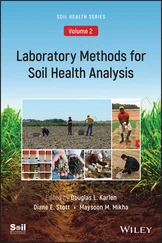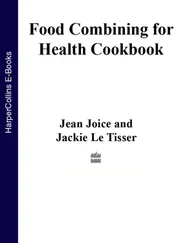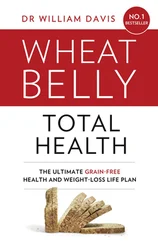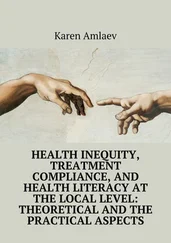Documenting benefits from soil health approaches first requires defining what is the benefit of interest and then selecting ways to measure and document the response. The principles associated with soil health are not new as evident by centuries of soil management, conservation, condition, tilth, quality, and other terms. Among the well‐known and generally accepted approaches for improving soil health are the goals of keeping the soil covered, reducing disturbance, maintaining plants year‐round, and diversifying the mix of plant species. Implementing these goals can increase the quantity of plant residues and root exudates returned to the soil, boost microbial activity, and ultimately lead to a cascade of soil improvements, including increased SOM, more stable soil aggregation, and efficient nutrient cycling. How well these benefits can be documented depends on the magnitude of change (generally determined by inherent soil properties and/or initial conditions) as well as the type of soil health test selected ( i.e ., in‐field, commercial or research laboratory, remote sensing), and the scale at which comparisons are to be made and meaningful ( i.e., from landscapes down to finely sieved and crushed soil samples). Interactions between inherent and dynamic soil properties can also make documenting soil health benefits difficult, since spatial and temporal variability can mask potential changes associated with new soil and crop management practices, such as annual cover crop establishment, which must be given adequate time for measurable effects to occur. Extreme weather conditions, such as too much or too little rainfall, early or late frost, or above normal temperatures can hinder the effectiveness of new or alternative management systems and prevent them from becoming established and changing soil properties in subsequent years. Without question, researchers have documented numerous benefits from soil health approaches. As the concept evolves, the core questions of defining what constitutes an important benefit and selecting reproducible methods to measure that benefit will remain a constant challenge and an important research goal.
1 Andrews, S.S., Karlen, D.L., and Cambardella, C.A. (2004). The soil management assessment framework: A quantitative soil quality evaluation method. Soil Sci. Soc. Am. J. 68(6), 1945–1962. doi:10.2136/sssaj2004.1945
2 Bennett, H.H., and Chapline, W.R. (1928). Soil erosion: A national menace. United States Department of Agriculture Circular 33. Washington, D.C.: United States Government Printing Office.
3 Cambardella, C.A., Moorman, T.B., Novak, J.M., Parkin, T.B., Karlen, D.L., Turco, R.F., and Konopka, A.E. (1994). Field‐scale variability of soil properties in central Iowa soils. Soil Sci. Soc. Am. J. 58(5), 1501–1511. doi:10.2136/sssaj1994.03615995005800050033x
4 Carter, A. (2019). “We don’t equal even just one man”: Gender and social control in conservation adoption. Soc. Nat. Resour. 32(8), 893–910. doi:10.1080/08941920.2019.1584657
5 Cotton, J., and Acosta‐Martínez, V. (2018). Intensive tillage converting grassland to cropland I mmediately reduces soil microbial community size and organic carbon. Agricultural and Environmental Letters 3:180047. doi:10.2134/ael2018.09.0047
6 Dane, J.H., and Topp, C.G., (eds.). (2002). Methods of soil analysis: Part 4 physical methods. SSSA Book Ser. 5.4. Madison, WI: SSSA. doi:10.2136/sssabookser5.4.
7 Derner, J.D., Smart, A.J., Toombs, T.P., Larsen, D., McCulley, R.L., Goodwin, J., Sims, S., and Roche, L.M. (2018). Soil health as a transformational change agent for us grazing lands management. Rangeland Ecology & Management 71(4), 403–408. doi:10.1016/j.rama.2018.03.007
8 Diamond, J. (2011). Collapse: How Societies Choose to Fail or Succeed. Revised ed. Penguin Books.
9 Dick, R.P. 1992. A review: Long‐term effects of agricultural systems on soil biochemical and microbial parameters. Agric. Ecosyst. Environ. 40:25–36. doi:10.1016/0167‐8809(92)90081‐L
10 Dick, R.P., (ed.). (2011). Methods of soil enzymology. SSSA Book Ser. 9. Madison, WI: SSSA. doi:10.2136/sssabookser9
11 Dinnes, D.L., Karlen, D.L., Jaynes, D.B., Kaspar, T.C., Hatfield, J.L., Colvin, T.S., and Cambardella, C.A. (2002). Nitrogen management strategies to reduce nitrate leaching in tile‐ drained midwestern soils. Agronomy Journal 94(1), 153–171. doi:10.2134/agronj2002.0153
12 Doran, J.W., Coleman, D.C., Bezdicek, D.F., Stewart, B.A. (eds.). (1994). Defining soil quality for a sustainable environment. SSSA Spec. Publ. 35. Madison, WI: SSSA and ASA.
13 Doran, J.W., and Jones, A.J., (eds.). (1996). Methods for assessing soil quality. SSSA Spec. Publ. 49. Madison, WI: SSSA.
14 Duncan, E.W., D.L. Osmond, A.L. Shober, L. Starr, P. Tomlinson, J.L. Kovar, T.B. Moorman, H.M. Peterson, N.M. Fiorellino, and K. Reid . 2019. Phosphorus and soil health management practices. Agricultural and Environmental Letters 4:1900014. doi:10.2134/ael2019.04.0014
15 Elliott, E.T., Pankhurst, B.E., Doube, C.E., and Gupta, V.V.S.R. (1997). Rationale for developing bioindicators of soil health. In: C. Pankhurst, (eds.), Biological indicators of soil health (p. 49–78). Wallingford, U.K.: CSIRO Division of Soils. CABI Publishing.
16 Findlater, K.M., Satterfield, T., and Kandlikar, M. (2019). Farmers’ risk‐based decision making under pervasive uncertainty: Cognitive thresholds and hazy hedging. Risk Anal. 39(8), 1755–1770. doi:10.1111/risa.13290
17 Fream, W. (1890). Tilth. p. 95–100. In W. Fream, Soils and their properties. London: George Bell & Sons.
18 Gebhart, D.L., Johnson, H.B., Mayeux, H.S., and Polley, H.W. (1994). The CRP increases soil organic‐carbon. J. Soil Water Conserv. 49(5), 488–492.
19 Giller, K.E., Witter, E., Corbeels, M., and Tittonell, P. (2009). Conservation agriculture and smallholder farming in Africa: The heretics’ view. Field Crops Res. 114(1), 23–34. doi:10.1016/j.fcr.2009.06.017
20 Heller, M.C. and Keoleian, G.A. (2003). Assessing the sustainability of the US food system: A life cycle perspective. Agricultural Systems 76(3), 1007–1041. doi:10.1016/S0308‐521X(02)00027‐6521X(02)00027‐6
21 Helms, D. (1991). Two centuries of soil conservation. OAH Magazine of History 5(3), 24–28. doi:10.1093/maghis/5.3.24
22 Hillel, D. (1991). Out of the earth: Civilization and the life of the soil. Oakland, CA: University of California Press
23 Hobbs, P.R. (2007). Conservation agriculture: What is it and why is it important for future sustainable food production? J. Agric. Sci. 145, 127–137. doi:10.1017/S0021859607006892
24 Hurisso, T.T., Culman, S.W., and Zhao, K. (2018). Repeatability and spatiotemporal variability of emerging soil health indicators relative to routine soil nutrient tests. Soil Sci. Soc. Am. J. 82, 939–948. doi:10.2136/sssaj2018.03.0098
25 Janzen, H.H. (2001). Soil science on the Canadian prairies– Peering into the future from a century ago. Can. J. Soil Sci. 81, 489–503. doi:10.4141/S00‐054
26 Janvier, C., Villeneuve, F., Alabouvette, C., Edel‐Hermann, V., Mateille, T., and Steinberg, C. (2007). Soil health through soil disease suppression: Which strategy from descriptors to indicators? Soil Biol . Biochem. 39(1), 1–23. doi:10.1016/j.soilbio.2006.07.001
27 Karlen, D.L., Mausbach, M.J., Doran, J.W., Cline, R.G., Harris, R.F., and Schuman, G.E. (1997). Soil quality: A concept, definition, and framework for evaluation. Soil Sci. Soc. Am. J. 61(1), 4–10. doi:10.2136/sssaj1997.03615995006100010001x
28 Karlen, D.L., Veum, K.S., Sudduth, K.A., Obrycki, J.F., and Nunes, M.R. (2019). Soil health assessment: Past accomplishments, current activities, and future opportunities. Soil Tillage Res. 195, 104365. doi:10.1016/j.still.2019.104365
Читать дальше












